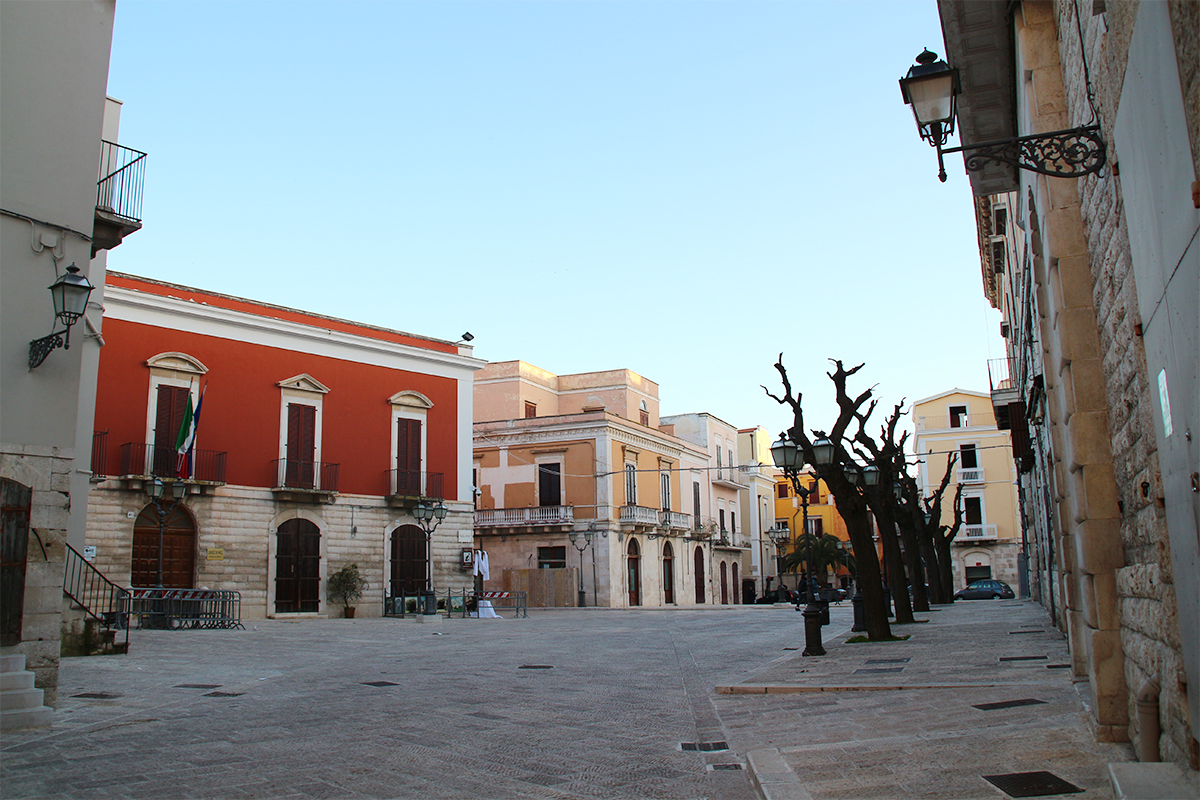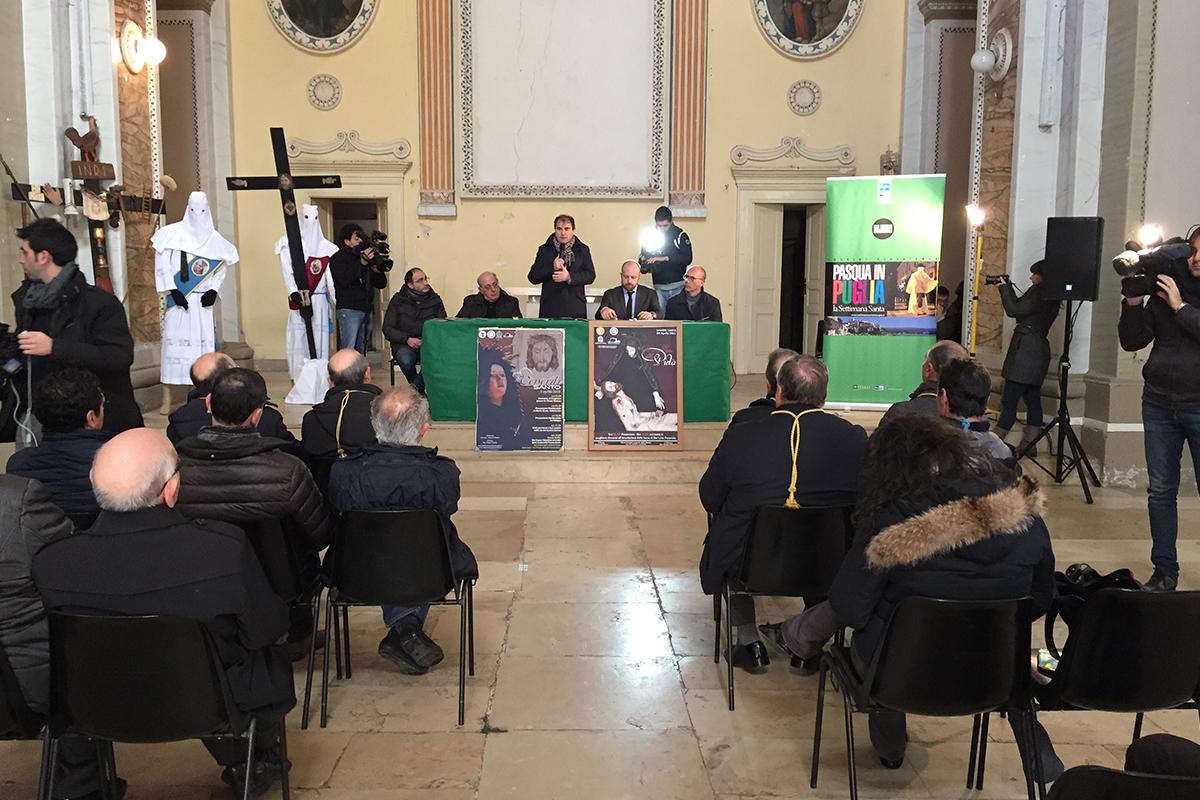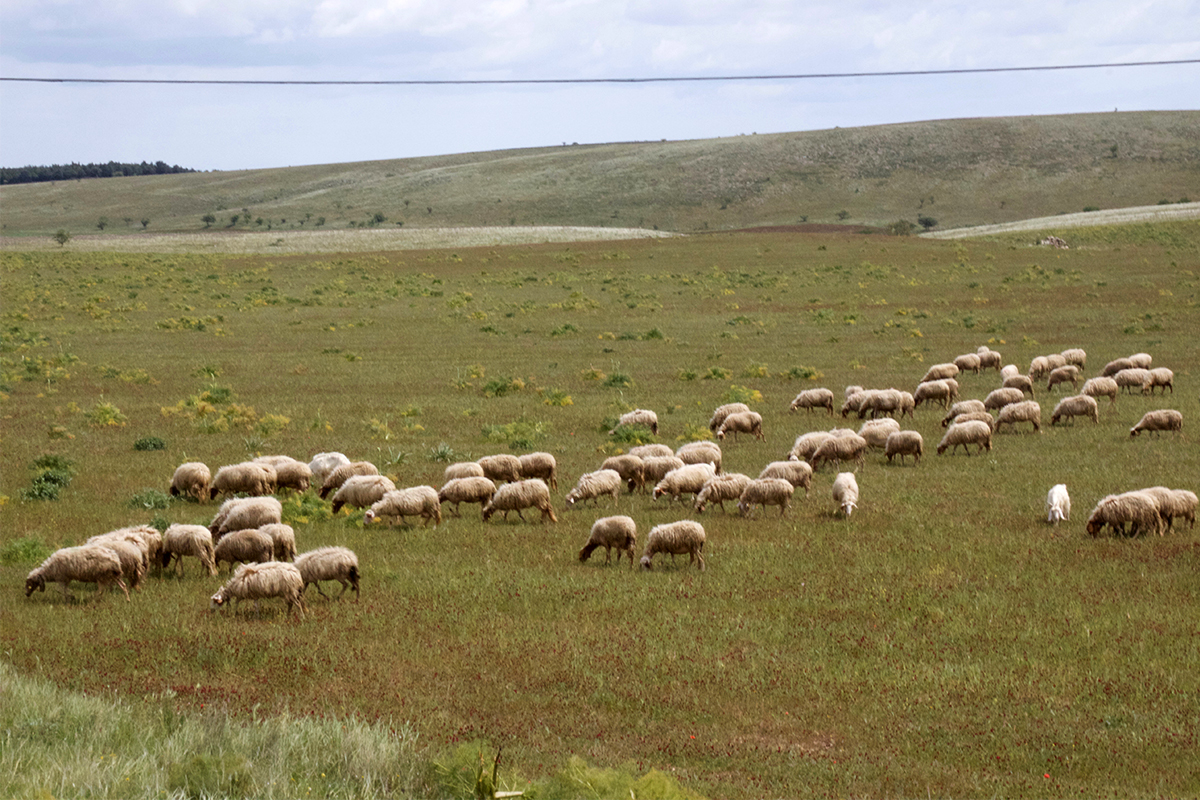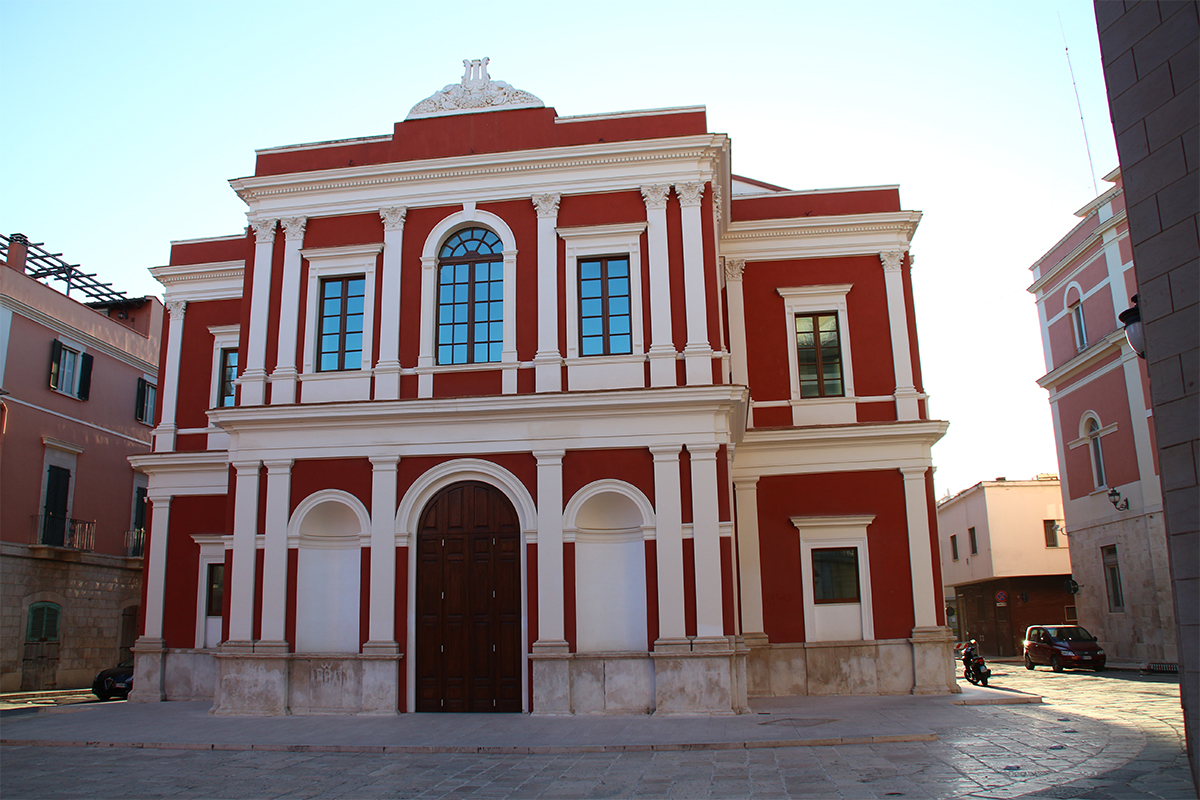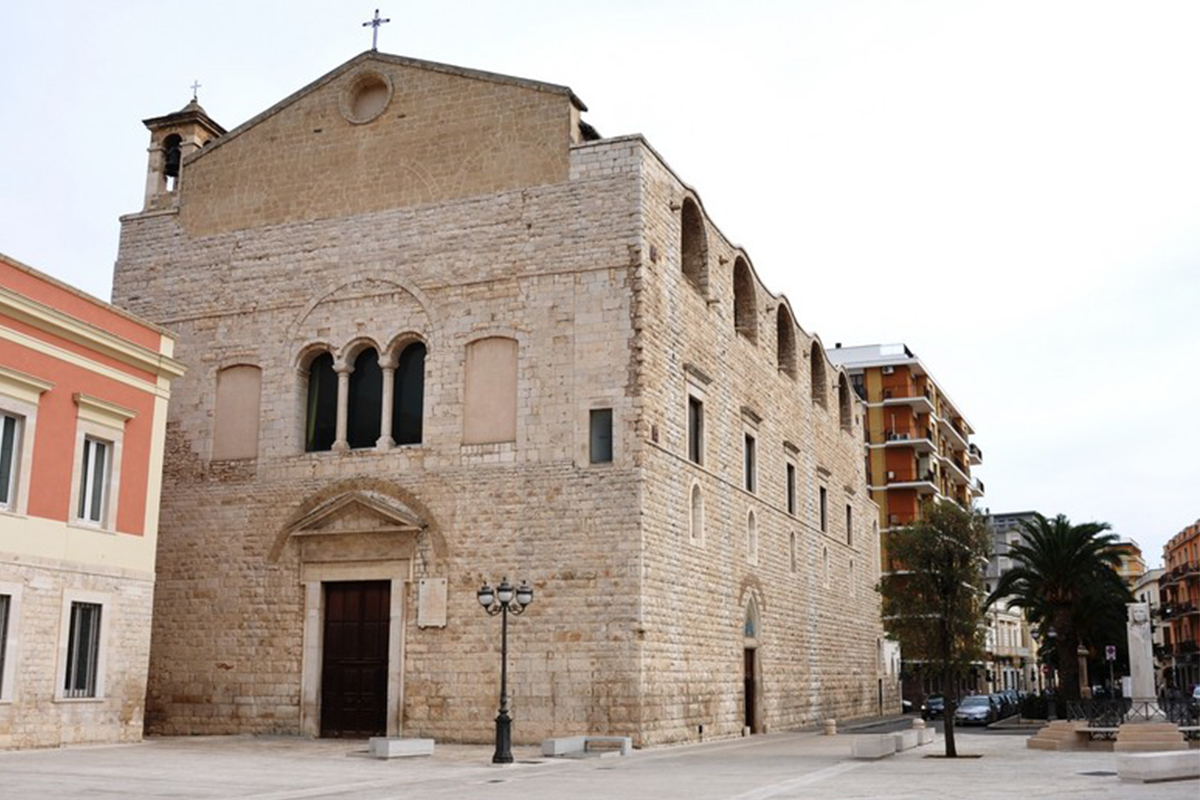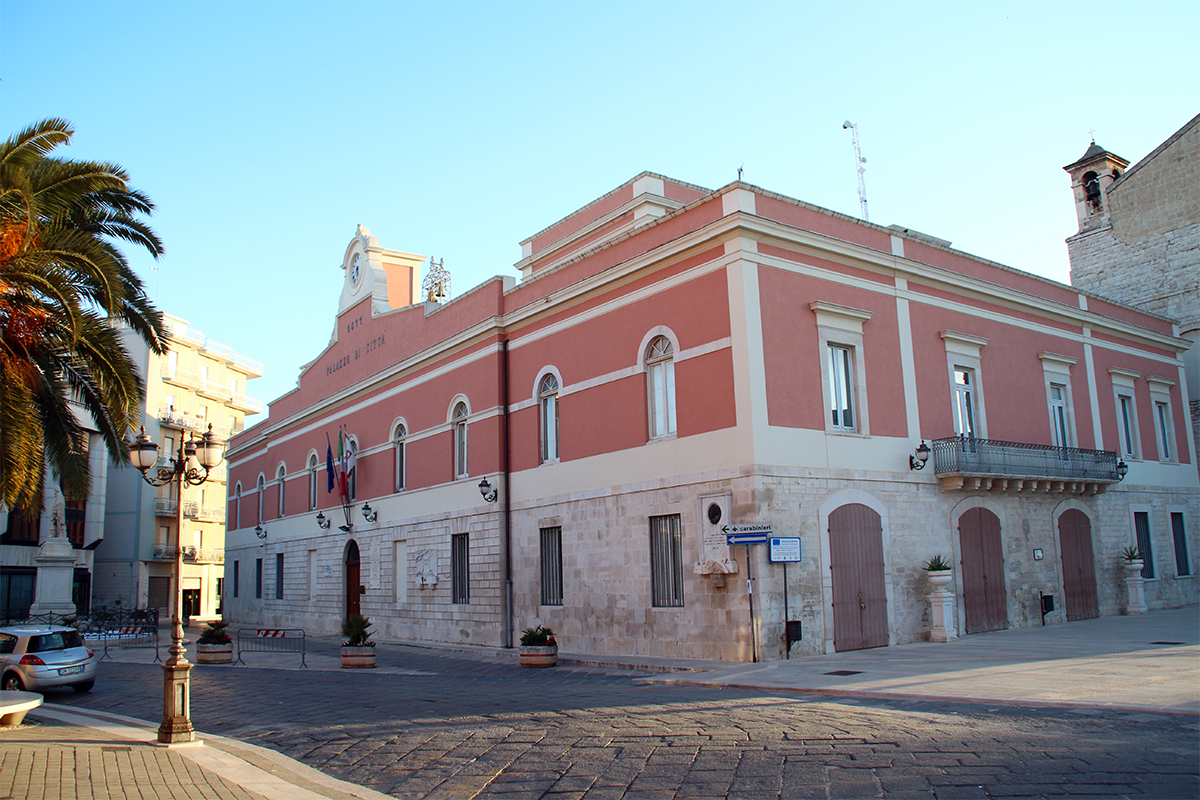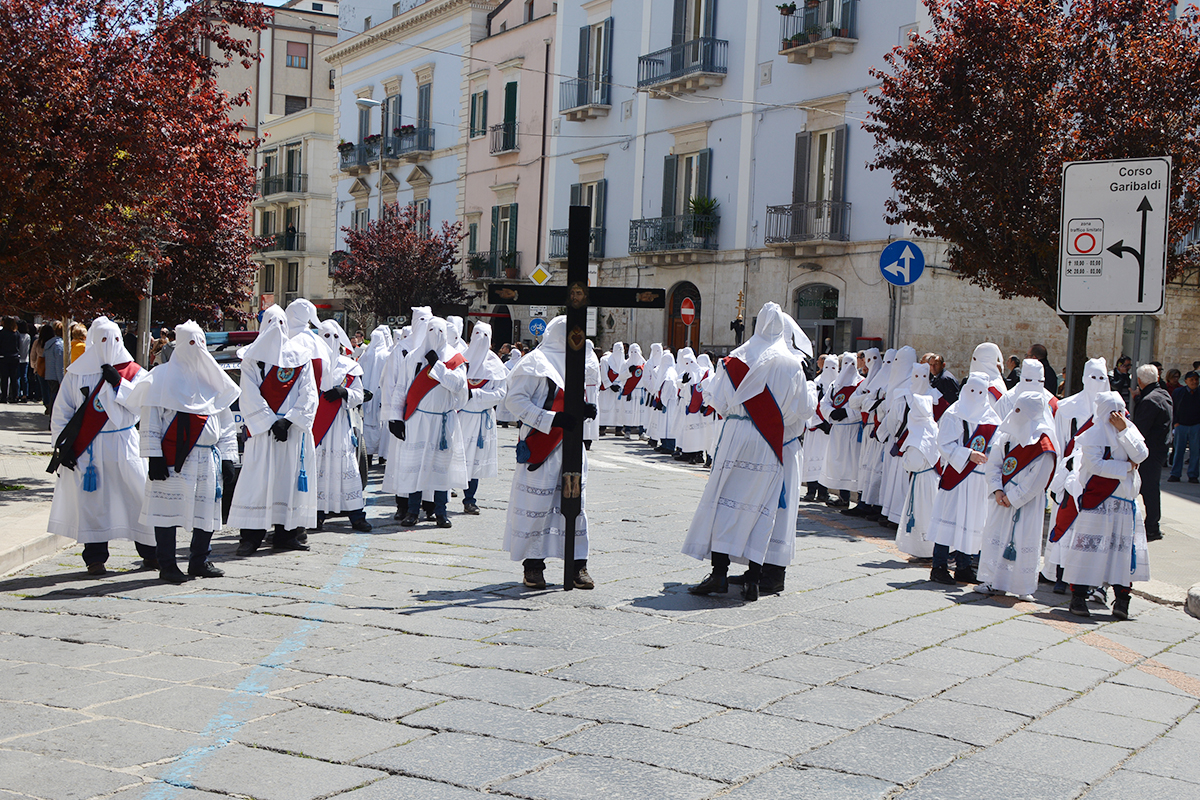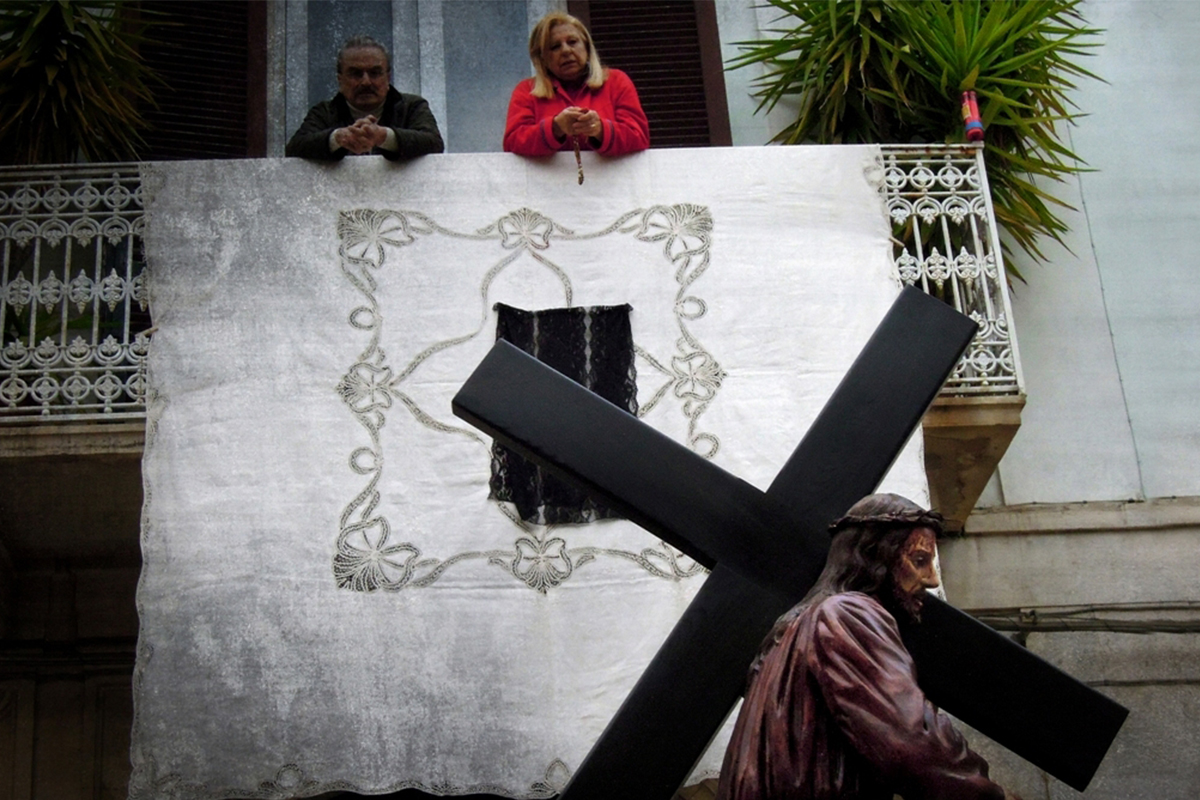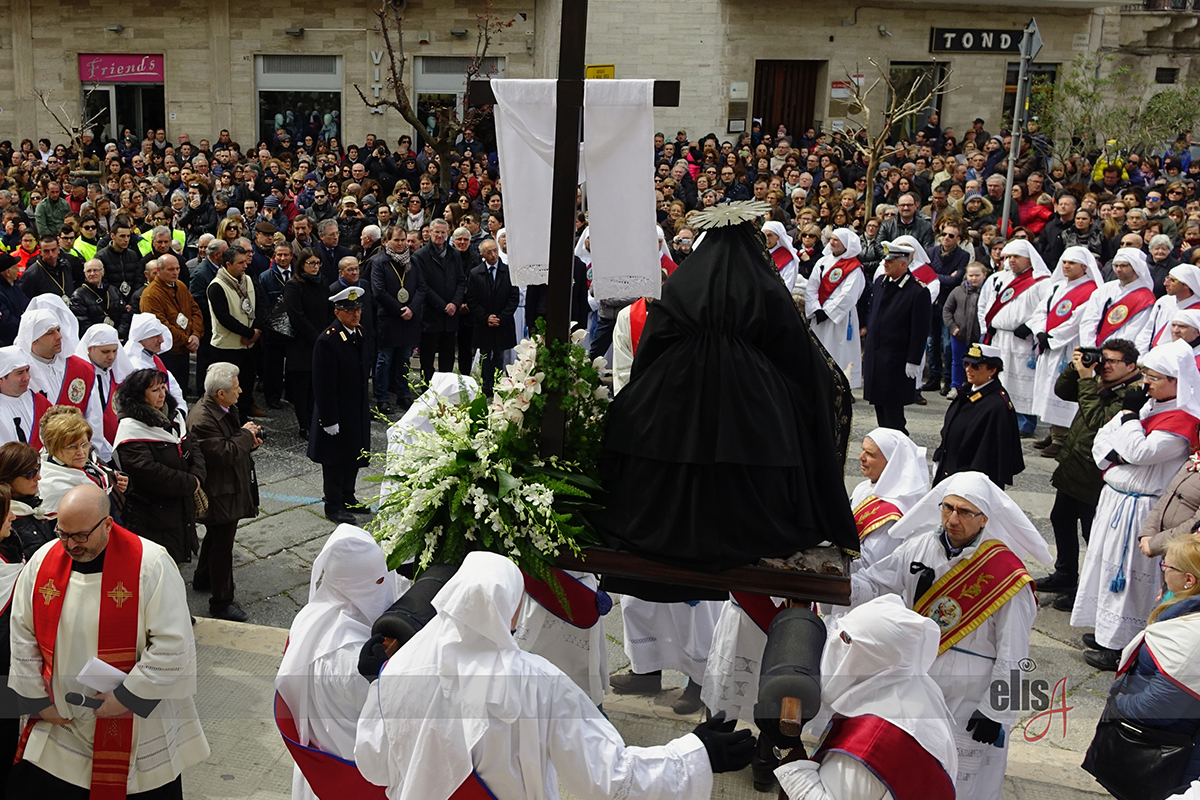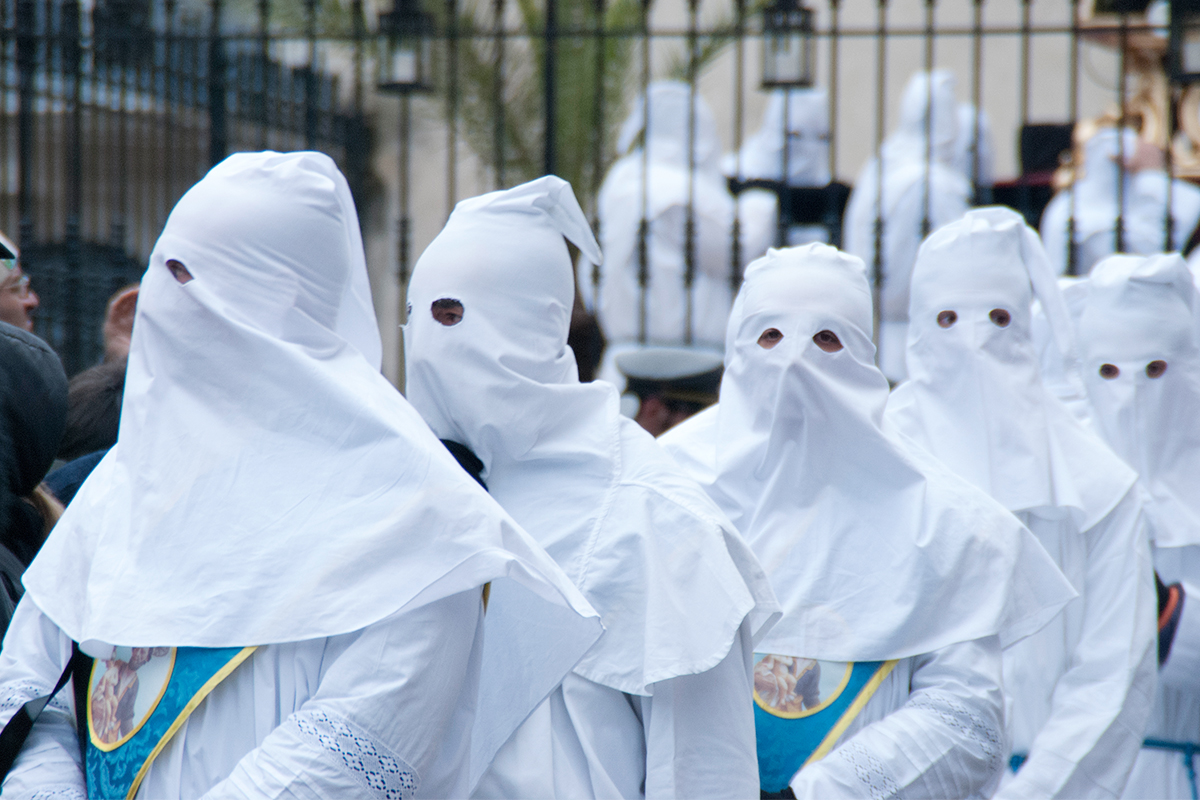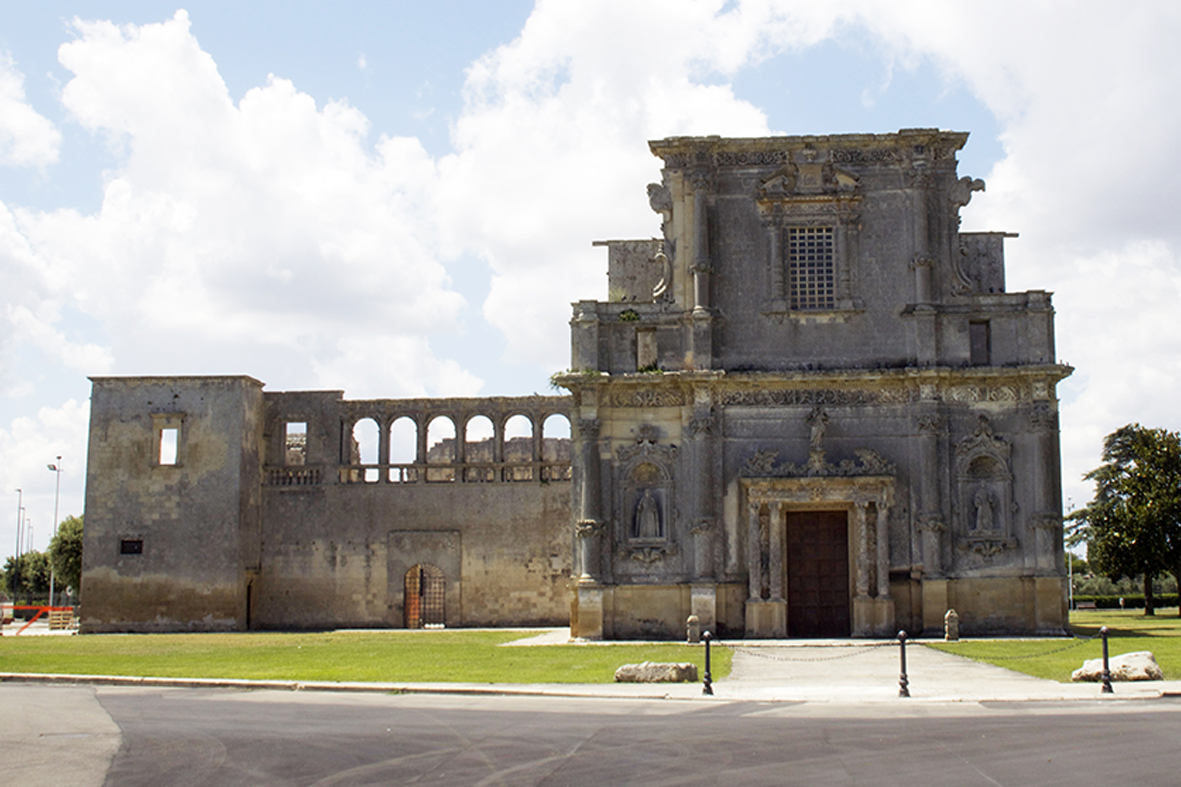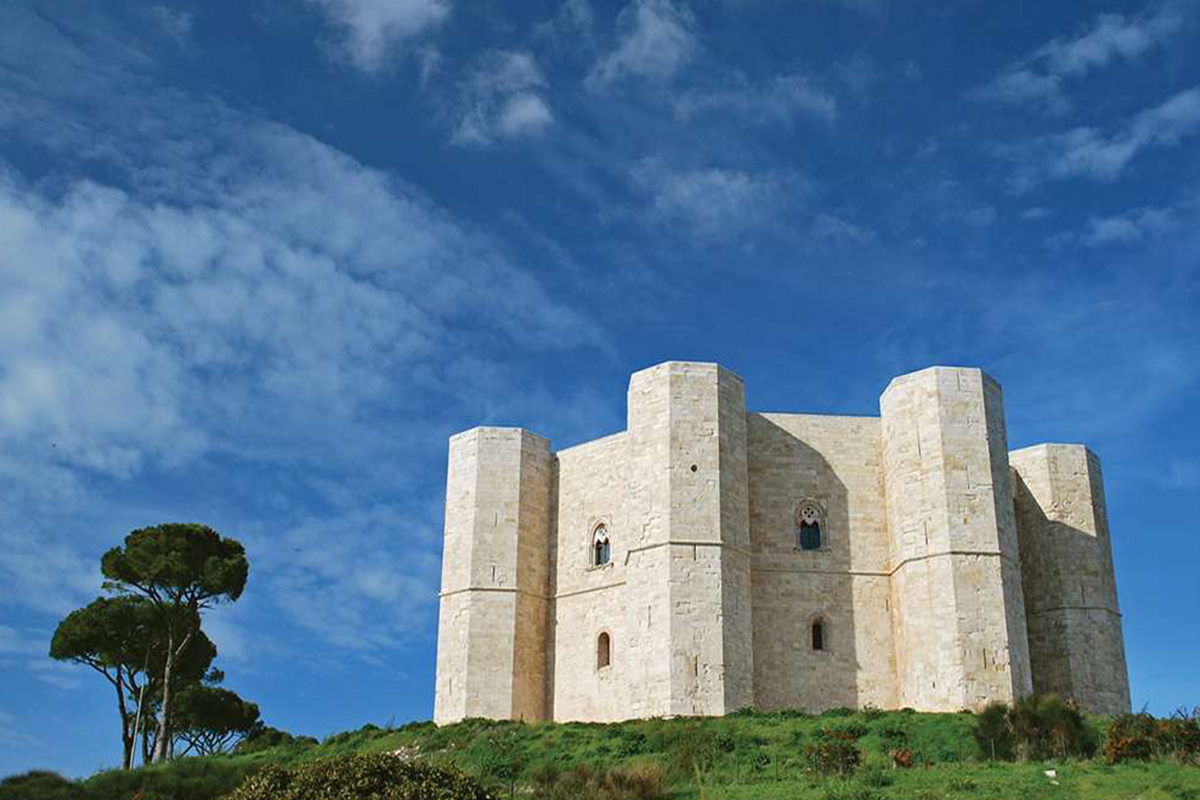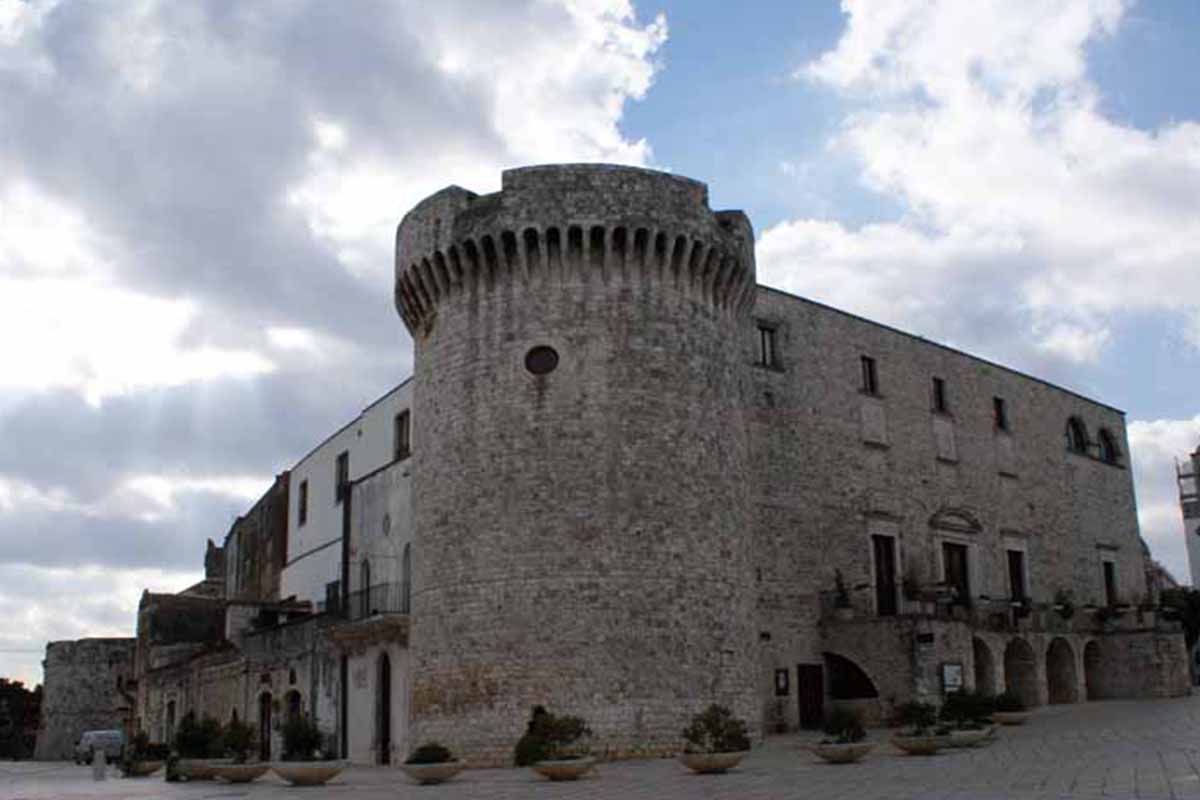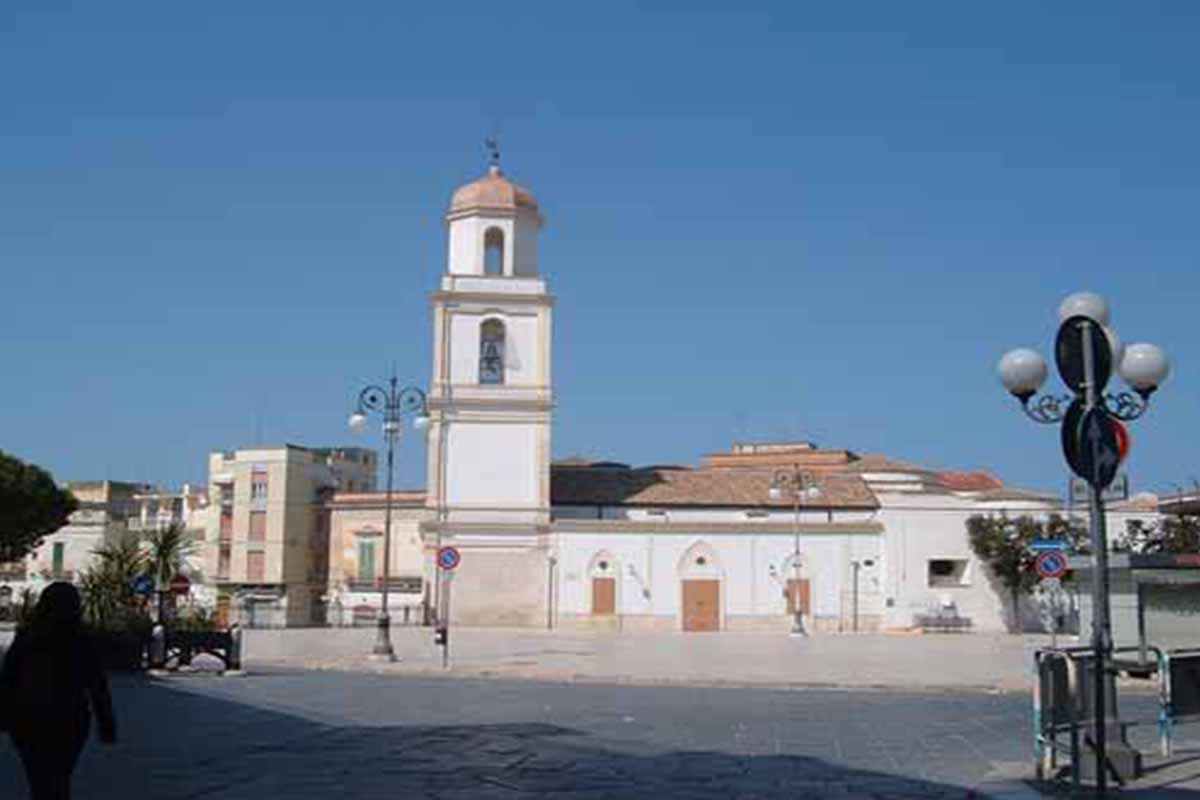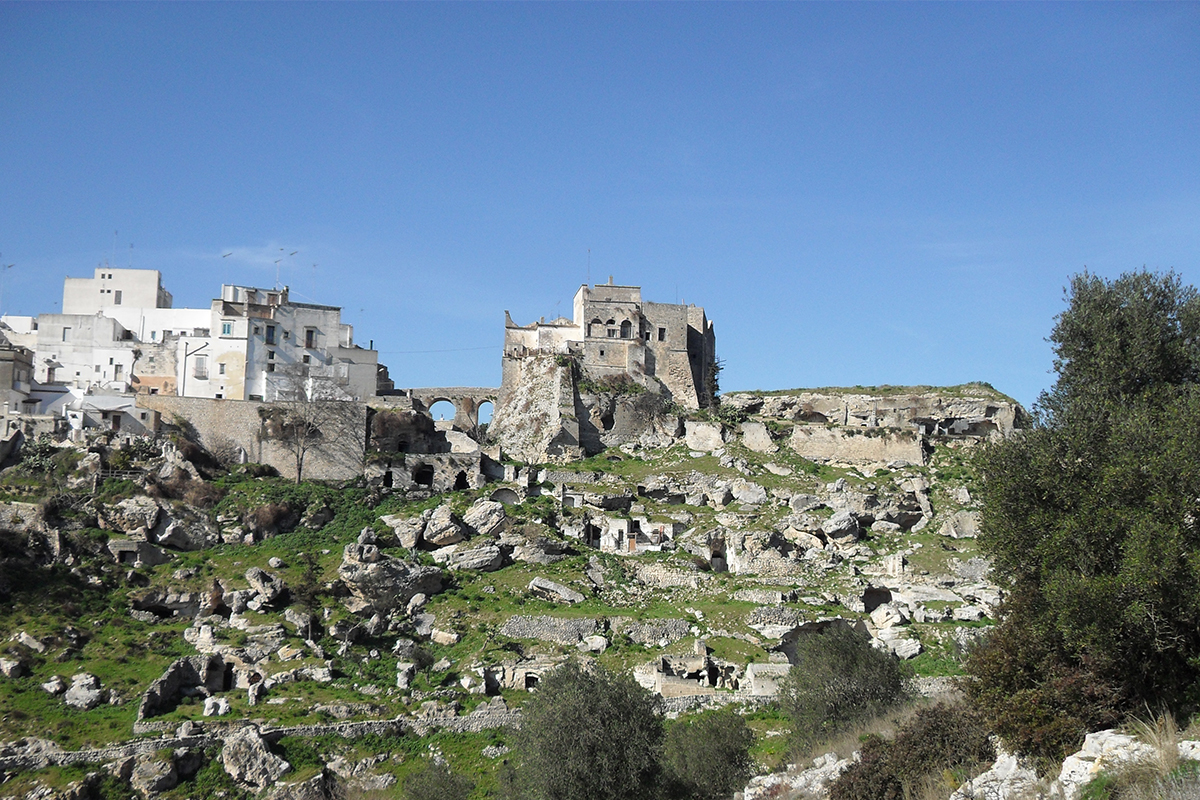Cities
Lights Out
09 Dicembre 0204
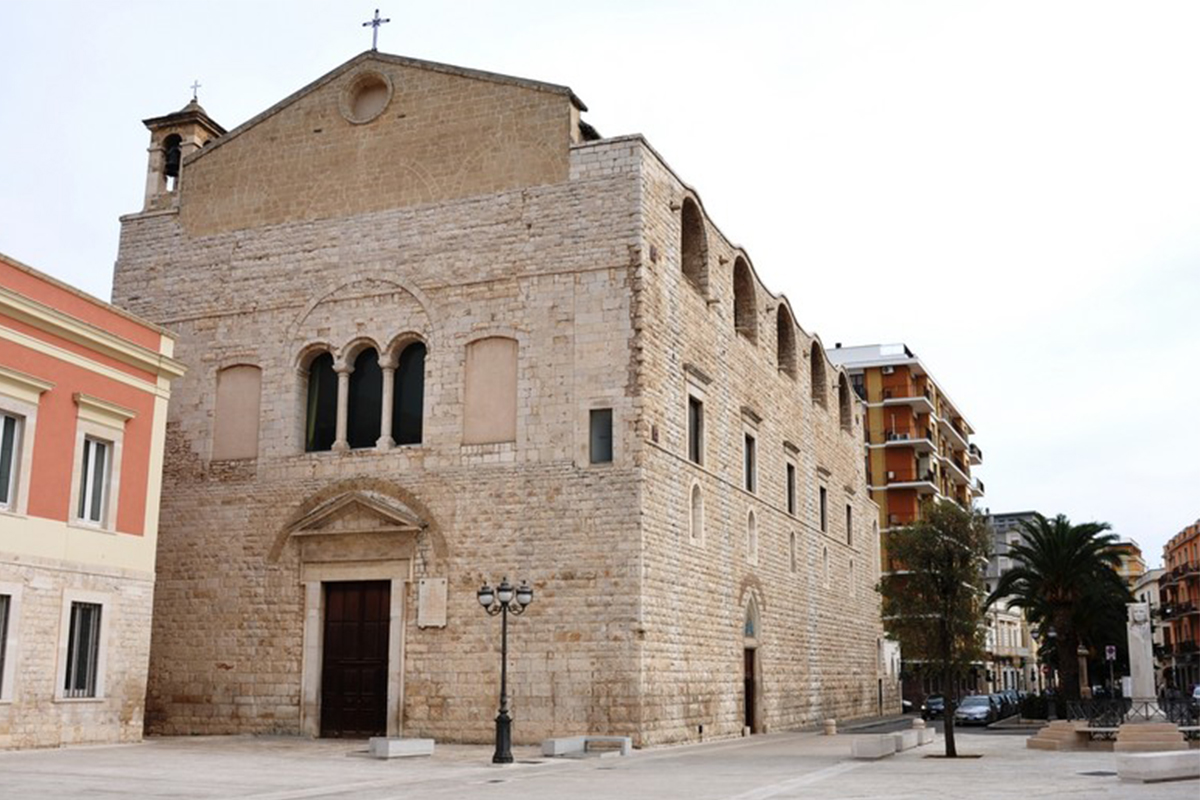
Come and discover the streets of Corato as I guide you through the scents of olive trees and ancient flavors. We are in Imperial Apulia, just steps away from the majestic Alta Murgia National Park, where the air is fresh and clean at 232 meters above sea level.
Let’s stroll together through the historic center, where the limestone streets seem to whisper medieval stories. It is said that the fortified village dates back to the Norman era of the 11th century. Here, I will guide you to discover its treasures: the Church of Santa Maria Maggiore, the Church of San Vito, the Municipal Theater, and historic palaces such as Palazzo Gioia and Palazzo De Mattis. Each building is part of a unique architectural layout that unfolds like circles.
We continue our journey toward the Museum of the City and Territory, housed in a former prison from the early 20th century. Here, we can admire archaeological finds from 8,000 years ago, telling the story of the ancient Neolithic populations of Torrepaone, along with pre-Roman and Roman artifacts, including the milestone stones of the Via Traiana.
Just outside the city, the landscape opens up to pristine nature: olive groves, vineyards, and wheat fields stretch into the karst terrain of the Alta Murgia. Here, within the National Park territory, you will find one of the richest areas of spontaneous vegetation, with shrubs, thistles, wild orchids, and aromatic plants. The connection between the environment and sustainability is an integral part of Corato, thanks to the Sustainable Tourism Charter, which protects the land and promotes responsible tourism.
Corato is also known as the City of the Olive and the Dolmen, renowned for its excellence in the agri-food sector: its high-quality olive oil, fine wines, pasta factories, and dairy products are appreciated throughout Italy and abroad. But let me tell you about the taralli, a pride of Corato’s tradition: small rings of hand-rolled dough, light and fragrant, produced since the 1800s following ancient recipes, best enjoyed with a good glass of Corato wine.
Places to Visit: Church of Santa Maria Maggiore, Church of San Vito, Municipal Theater, Museum of the City and Territory, Alta Murgia National Park, Palazzo Gioia, Palazzo De Mattis.
Good Friday
Processione di Maria SS.ma Addolorata
The Processione di Maria SS.ma Addolorata is a moment of profound spirituality and reflection that marks the beginning of the Good Friday celebrations in Corato. Organized by the Confraternita di San Giuseppe, this procession gathers thousands of faithful and devotees who assemble at dawn to participate in one of the most moving rites of Holy Week.
The day begins at 4:00 AM with a moment of prayer dedicated exclusively to the confratelli and portatori of the statue. Presided over by the parroco, the rite takes place inside the Parrocchia di San Giuseppe, surrounding the wooden statue of the Addolorata, crafted in 1880. Outside, in the church square, the faithful observe in silence, creating an atmosphere of deep devotion.
At 4:50 AM, the distinctive sound of the “troccola”, carried by the youngest confratelli, announces the beginning of the procession. At 5:00 AM, the statue of the Addolorata emerges, accompanied by the poignant notes of the funeral march “Eterno Dolore” by Maestro Quatrano. The procession, followed by a large crowd, winds through the streets of the city and concludes with the statue’s return to the Parrocchia di San Giuseppe at 10:30 AM.
-Date: April 18, 2025
-Time: 4:50 AM
-Location: Parrocchia di San Giuseppe
Good Friday
Processione dei Misteri
The Processione dei Misteri, one of the most evocative moments of Good Friday, begins at 6:00 PM from the Parrocchia di San Giuseppe. Organized by the Confraternita di San Giuseppe, this procession involves all the Confraternite and Catholic associations of the city, accompanied by civil and military authorities.
The procession opens with the sound of the “troccola”, carried by the youngest confratelli, and the display of the gonfalone nero. The sequence of nine statues represents the key moments of Christ's Passion:
1. Gesù nel Getsemani (Unitalsi and Confraternita del SS.mo Sacramento)
2. San Pietro con il gallo (Associazione Santa Bernadette and Confraternita Misericordia)
3. Gesù alla Colonna (Confraternita del Purgatorio)
4. Gesù alla Canna (Arciconfraternita di Santa Maria Greca)
5. Gesù caricato della Croce (Confraternita del SS. Rosario)
6. La Veronica (Confraternita del Carmine)
7. Il Calvario (Confraternita dell’Immacolata)
8. Gesù Morto (Associazione Madonna del Pozzo and Confraternita di San Giuseppe)
9. L’Addolorata (carried by devoted portatori of the Confraternita di San Giuseppe)
Three of the statues, carved in polychrome limewood, date back to the 17th century and represent an invaluable artistic heritage.
At 9:15 PM, the procession enters the historic center, illuminated only by the faint light of candles and lanterns placed on balconies. At Piazza Sedile, at 10:00 PM, the Via Crucis cittadina takes place, animated by parish communities and presided over by the Coordinatore zonale del clero. The procession concludes with the statues’ return to the Parrocchia di San Giuseppe around 11:00 PM.
-Date: April 18, 2025
-Time: 6:00 PM
-Location: Parrocchia di San Giuseppe
Sabato Santo
Processione di Maria SS.ma della Pietà
The Processione di Maria SS.ma della Pietà, organized by the Arciconfraternita di Santa Maria Greca, takes place at dawn on Sabato Santo. The procession begins at 7:50 AM from the Parrocchia di Santa Maria Greca, accompanying the wooden statue of the Pietà, dating back to the late 19th century, through the streets of the city.
One of the most significant moments occurs around 12:30 PM, when the procession passes through Via Luisa Piccarreta and stops in front of the association dedicated to the Serva di Dio Luisa Piccarreta. Here, a deeply moving moment of prayer takes place, involving the entire community.
The procession concludes with the statue’s return to the Parrocchia di Santa Maria Greca at 1:00 PM, marking the transition from the solemn reflection of Venerdì Santo to the hope of the Resurrection.
-Date: April 19, 2025
-Time: 6:50 AM / Return 12:00 PM
-Location: Parrocchia di Santa Maria Greca
Good Friday / April 18, 2025
• CORATO / Processione di Maria SS.ma Addolorata / Chiesa di San Giuseppe / 4:50 AM
• CORATO / Processione dei Misteri / Chiesa di San Giuseppe / 6:00 PM
Holy Saturday / April 19, 2025
• CORATO / Processione della Pietà / Chiesa di Santa Maria Greca / 7:50 AM
CONFRATERNITA DI SAN GIUSEPPE
The Confraternita San Giuseppe was founded on April 13, 1627, following the approval given by the then Archbishop to some priests, clergy, and secular noblemen from Corato to establish a Congregation in honor of Saint Joseph and to build a church dedicated to the same saint. The small church was built, with the title of Saint Joseph, outside the city walls, precisely in the area commonly known as Vaglio, and corresponds to the central nave of the current church. The Confraternita San Giuseppe enjoys legal status, obtained with Royal Decree n° 1391 of 04/06/1936 under the title “Opera Pia San Giuseppe.” On 15/05/1987, it was registered in the Register of Legal Entities at the Prefecture of Bari under n° 115, also under the title “Opera Pia San Giuseppe,” thus obtaining civil recognition from the Italian State. With the subsequent Decree of the Ministry of the Interior of 05/05/2009, the name changed from “Opera Pia San Giuseppe” to “Confraternita San Giuseppe.” On March 19 each year, the day the Church celebrates the solemnity of Saint Joseph, the confraternity celebrates its titular saint by participating in the Eucharistic celebration in the namesake parish, where the 18th-century statue of the saint is exposed for veneration by the faithful.
As of 2020, the Confraternita San Giuseppe has 142 members, including 130 confreres and consorelles, 6 aspiring confreres (i.e., minors between 14 and 17 years old), and 6 probationers (i.e., children of confreres under 14 years old). In recent years, there has been a steady increase in young people who have expressed their desire to join the association. The confraternal habit is composed of: a white robe, a blue belt, a damask blue shoulder strap with a yellow border containing the image of Saint Joseph, a medallion with the silver icon of Saint Joseph hanging on a blue cord, a blue bow, and white gloves. Only and exclusively on Good Friday, during the penitential processions of Maria SS. Addolorata and dei Misteri, the uniform is composed of: a white robe, a blue belt, a damask blue shoulder strap with a yellow border containing the image of Saint Joseph, a white hood (better known as “pappafico”), a black bow, and black gloves. In these two processions, the medallion is not worn. The hood, in particular, is a white cloth cap that is used only during the Good Friday processions as a sign of penitence and serves to cover the entire face of the confreres while carrying the statues of the dead Jesus and the Addolorata on their shoulders. Regarding popular piety rites, the Confraternita San Giuseppe has organized, for centuries, the Good Friday processions, namely the one of Maria SS.ma Addolorata and the one of dei Misteri. Additionally, together with the Confraternita del Carmine, it has the right to carry the wooden statue of Corato’s Patron Saint, San Cataldo, on its shoulders during the procession on Saturday and Monday of the patronal feast in August, as well as the silver bust of San Cataldo during the Sunday procession.
On September 15 each year, the day dedicated to the Memory of the B. V. Maria Addolorata, the confraternity, together with the Parish, celebrates the parish feast. After the solemn afternoon Mass, the Addolorata procession takes place, during which the so-called 'a festa' habit is worn. The procession travels the entire city center. Furthermore, the Confraternita also participates every year in the Corpus Domini procession.
ARCICONFRATERNITA SANTA MARIA GRECA
In 1710, Don Domenico Candido was appointed rector of the Chiesa Santa Maria Greca. He felt the need to spread the cult of the protector of Corato, Santa Maria Greca, and therefore decided to establish a lay confraternity with the title of Confraternita Santa Maria Greca. Thanks to the intercession of the Madonna Greca, Corato was freed from a severe plague that in July 1656 struck the city of Naples and spread to Apulia, including Corato. The Confraternita was founded on February 8, 1712, and since its establishment has had the obligation to keep the main religious functions alive. After several events, the confraternity became extinct after about 162 years. On May 17, 1874, by the will of Archbishop Mons. Giuseppe dei Bianchi Dottula, the confraternity was restored with great solemnity, named Arciconfraternita Santa Maria Greca, with the right to raise the double gonfalon in the processions. The Arciconfraternita Santa Maria Greca has the obligation to support and finance the solemnity in honor of the Madonna Greca, whose anniversary and feast are celebrated on July 18 each year with a solemn Mass followed by the procession of the Madonna’s picture along the city’s main street.
As part of the rites of Settimana Santa, in 1890, after a dispute with the Confraternita di San Giuseppe, the reasons for which remain unknown to this day, it acquired the right to take out in procession on Holy Thursday the statue of Maria SS.ma della Pietà. Since the early 1970s, this procession has been moved to the morning of Holy Saturday to better coordinate the times of the Passion and Death of Jesus with the meaning of this icon. In addition, the Arciconfraternita also participates in the Processione dei Misteri, which takes place on Good Friday, during which it is responsible for transporting the statue of Gesù alla Canna. Among other processions, it participates with the confraternal habit in the Corpus Domini procession and in the solemn Sunday procession of the Patron Saint, during which the silver bust of San Cataldo is carried.
Cities Info
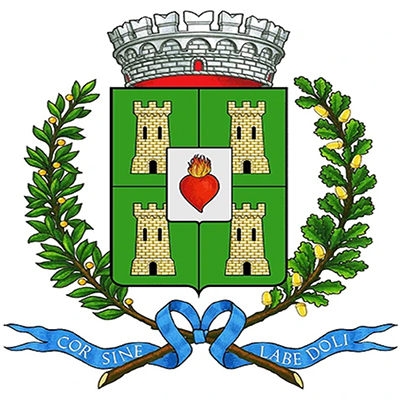
Municipality of Corato
T +39 080 9592111
Municipal Police
T +39 080 872 1014
Tourist Information Point
Piazza Sedile, 45
T +39 080 872 0861
infopointcorato@gmail.com
Highlighted Municipalities


 it
it en
en fr
fr es
es de
de pt
pt